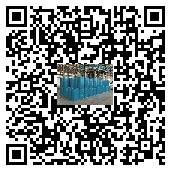In the field of material surface protection, UV curing hardening, wear-resistant and scratch-resistant agents are setting
off a technological revolution. From mobile phone screens to car paint, from eyeglass lenses to furniture surfaces, this
seemingly mysterious additive has become an indispensable "invisible armor" in modern industry with a series of
subversive advantages. How does it rewrite the rules of material protection? Let's find out.
1. Extremely fast curing: efficiency revolution reshapes the production process
The curing process of traditional coatings often requires hours or even days of waiting time, but the emergence of UV
curing hardening, wear-resistant and scratch-resistant agents has completely broken this limitation. Under ultraviolet
irradiation, the photoinitiator inside it is instantly activated, driving the molecular chain to cross-link rapidly, so that the
liquid coating is cured within seconds to tens of seconds. Taking the production of mobile phone screens as an example,
the curing time of each piece of glass using traditional processes is about 30 minutes, and after the introduction of UV
curing technology, the processing time of a single piece is shortened to less than 20 seconds, and the production efficiency
is increased by nearly 100 times.
This extremely fast curing feature not only greatly shortens the production cycle, but also significantly reduces energy
consumption costs. Traditional thermal curing processes require continuous high-temperature baking, while UV curing
consumes energy only at the moment of irradiation. The energy consumption of producing the same area of coating can
be reduced by more than 70%. At the same time, rapid curing reduces the production space occupied, and enterprises do
not need to configure large-scale curing equipment and sites, providing small and medium-sized manufacturing enterprises
with the possibility of low-cost transformation and upgrading.
2. Super protection: the perfect balance of hardness and toughness
The core value of UV curing hardening wear-resistant and scratch-resistant agent lies in the ability to build an indestructible
protective layer on the surface of the material. By precisely controlling the ratio of monomers and oligomers in the formula,
the hardness of the cured coating can reach 6H-9H (equivalent to the hardness of quartz or even sapphire), which can resist
scratches from daily hard objects such as keys and coins. In the automotive coating test, the paint surface coated with this
scratch-resistant agent withstood 2,000 reciprocating frictions with steel wool without obvious scratches, and the wear
resistance was increased by more than 5 times that of ordinary coatings.
What is more noteworthy is that this protective layer is not "rigid and brittle", but has both high hardness and high
toughness. When the coating is impacted, the molecular network structure can quickly disperse the stress to avoid cracks
or peeling. In the application of eyeglass lenses, even if they encounter accidental impacts, the lenses coated with this
anti-scratch agent can still remain intact, effectively protecting the safety of users.
3. Environmental protection pioneer: green technology leads industry change
At a time when environmental protection regulations are becoming increasingly stringent, UV-cured hardened wear-resistant
anti-scratch agents show significant green advantages. Its formula contains almost no volatile organic compounds (VOCs),
and only releases trace gases during the curing process, which is far lower than the emission level of traditional solvent-based
coatings. It is estimated that furniture manufacturers using this technology can reduce VOCs emissions by more than 90%
each year, easily meeting environmental protection standards.
In addition, the UV curing process does not require the use of a large amount of diluents and cleaning agents, which reduces
the generation of chemical waste from the source. This green feature not only conforms to the concept of sustainable
development, but also wins policy support and market competitiveness for enterprises, becoming the preferred technology
for many brand manufacturers.
4. Precision customization: flexible adaptation to multiple application scenarios
Another major advantage of this anti-scratch agent is its high customization capability. By adjusting the formula composition
and curing process, precise control of different performances can be achieved: for electronic products, ultra-transparent
coatings with a transmittance of more than 99% can be customized; in the field of automotive interiors, matte coatings with both
scratch resistance and touch optimization can be developed; and in the medical device industry, special protective layers with
antibacterial functions can be prepared.
This customization capability makes it widely adaptable to different material substrates. Whether it is glass, metal, plastic or
composite materials, it can achieve strong adhesion and performance improvement by adjusting the formula. For example, on car
lampshades made of polycarbonate (PC), this anti-scratch agent not only enhances the surface hardness, but also extends the
service life of the lampshade through an anti-yellowing formula.
5. Full life cycle value: long-term benefits far exceed expectations
Although the initial purchase cost of UV-cured hardened wear-resistant anti-scratch agents is slightly higher than that of traditional
coatings, the long-term benefits they bring far exceed the investment. Taking the mobile phone screen as an example, the use of
this anti-scratch agent can extend the anti-scratch life of the screen by more than 3 times, significantly reducing the after-sales repair
rate of the product; in the automotive industry, the paint surface of the vehicle coated with this anti-scratch agent has an average
value retention rate of 8%-10% in the second-hand car market.
In addition, due to the high wear resistance and self-cleaning properties of the coating, the subsequent maintenance cost is greatly
reduced. The furniture surface no longer needs frequent waxing and maintenance, and the cleaning frequency of optical lenses can
also be reduced by more than 50%. From the perspective of the entire life cycle, the use of this technology can save a lot of time
and economic costs for enterprises and users.


